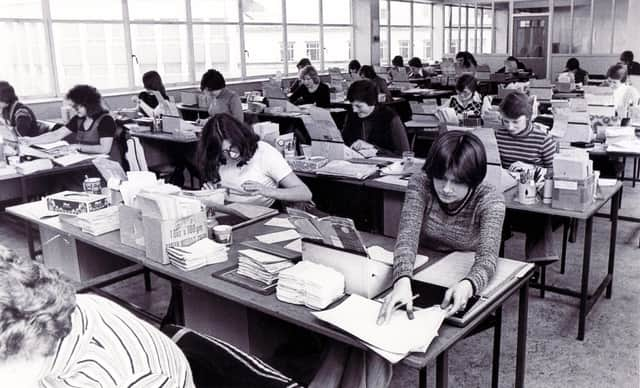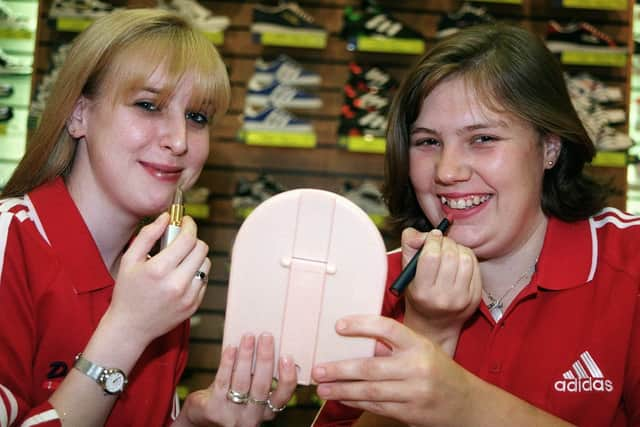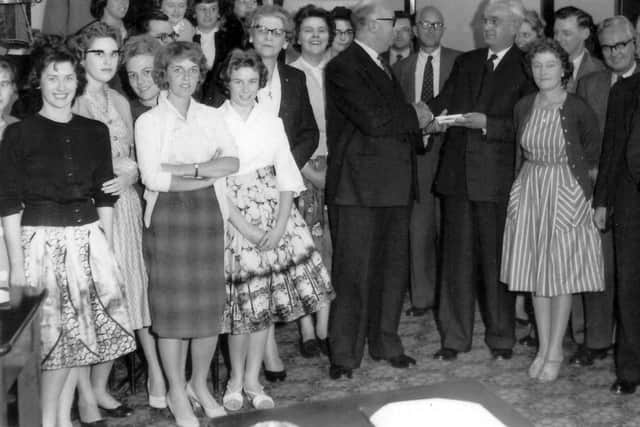Looking back: Freedom for women came when we stopped wearing girdles


She launched a petition calling for the policy to be made illegal and as a result the dress code at the firm was amended.
It previously stated that female employees should ‘frequently reapply makeup to include lipstick, blusher, mascara, and eye shadow.
Advertisement
Hide AdAdvertisement
Hide AdNail varnish only from specific colours, hosiery of a specified thickness, blonde hair to have no roots showing and heels to be between two-four inches high.


It appears that there were no guidelines for men’s appearances.There were many reports from women about the discriminatory dress rules in their place of work.
One young shop worker received a memo asking that she should wear shorter skirts and unbutton her blouse when serving male shoppers at Christmas.
Today women are aware of their rights in a way that we certainly were not when we started work.It can be a tricky one.
Advertisement
Hide AdAdvertisement
Hide AdYou can be expected to look neat and tidy when you are in the workplace, but there is a difference between that and blatant sexual discrimination.


High heels have always been considered to have a sexy image, by men who of course have never had to wear them!
There have always been standardised business clothes. In the 50s and 60s, class divisions were clearly reflected in working clothes.
Working men wore caps and clothes suitable for manual labour, with middle class men distinguished by white collars and suits.
Advertisement
Hide AdAdvertisement
Hide AdMiddle class women wore hats and working-class women head scarves.Throughout the 50s dress codes were strict.
On no account could women wear trousers or thick stockings and had to endure sweaty girdles to hold their nylons up.
Emancipation came in the 1960s when tights became commonplace, with restrictive foundation garments a thing of the past!
Men in jackets sweltered in offices with no air conditioning.
Advertisement
Hide AdAdvertisement
Hide AdOccasionally ties could be loosened, or in extreme circumstances jackets could be removed.
Men with beards had to have them trimmed frequently and any suggestion of food substances being present could be a disciplinary matter.
As could excess sweating, although some men thought of deodorants as being effeminate.
It wasn’t until the 1960s that toiletries for men really caught on with Hai Karate after shave being sold with a small self-defence booklet with advice on warding off unwelcome female attention.
Advertisement
Hide AdAdvertisement
Hide AdThe television advertising had the slogan ‘Be careful how you use it!’
Fashion for women in the 1960s included miniskirts, but any female daring to wear one considered to be too short would be told off in no uncertain terms.
In fact it’s a wonder management ever got time to do any work! Take the men who were trying to daringly sport a ‘flower power’ tie on occasion but with no luck!
Things have moved on now, and it’s a fact that dress codes aren’t what they used to be.
Advertisement
Hide AdAdvertisement
Hide AdSome companies adopted a business-casual dress code which may have signalled the nail in the coffin for office dress codes, and which included the wearing of chinos, jeans and ‘dress down Fridays’.
During the 1990s when I was working in Sheffield Town Hall, one of the solicitors attempted to create a precedent and actually appeared on one very hot day in shorts.
It wasn’t long before he was on his way home to get changed.
I suspect things are rather different there today!